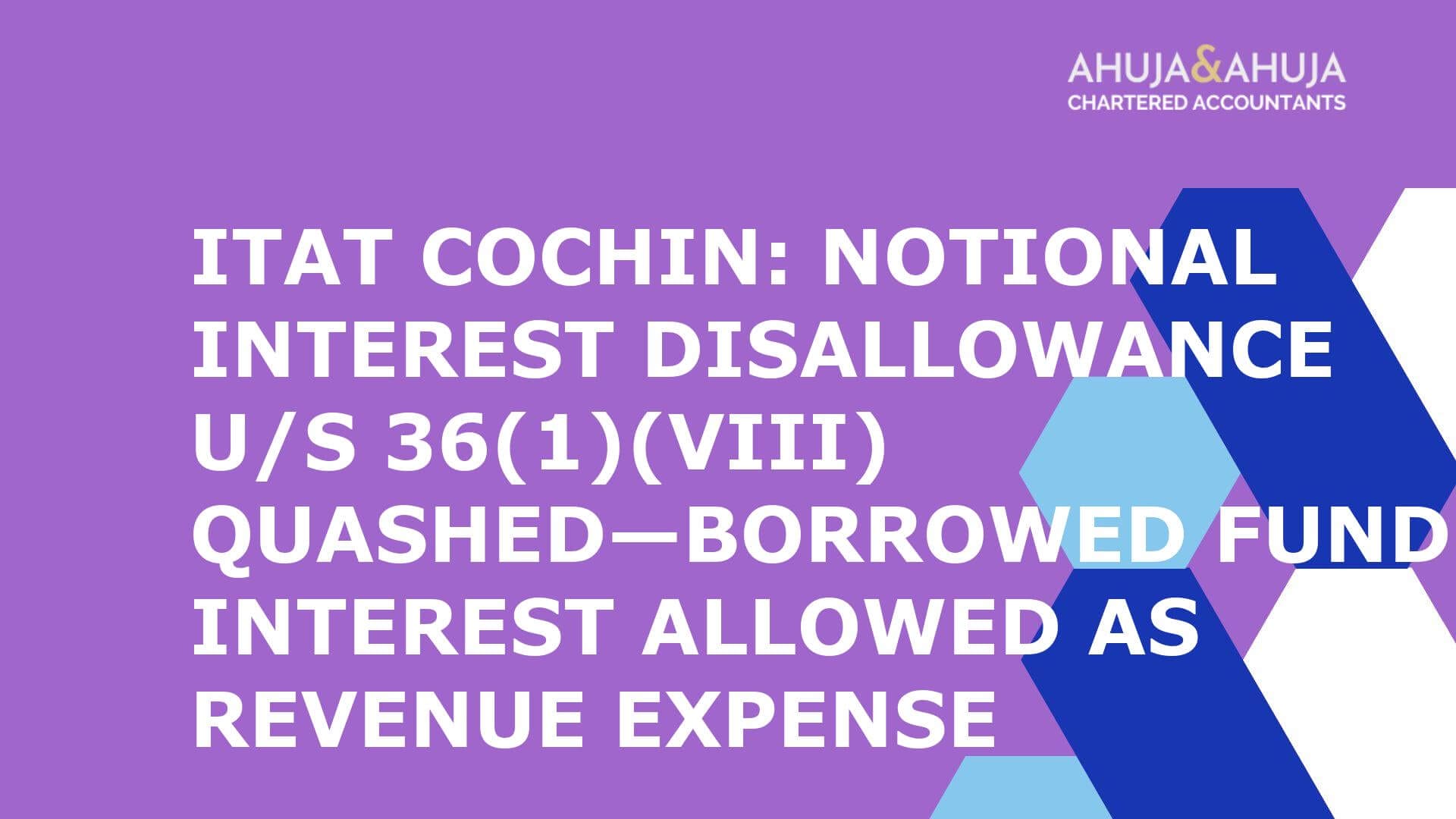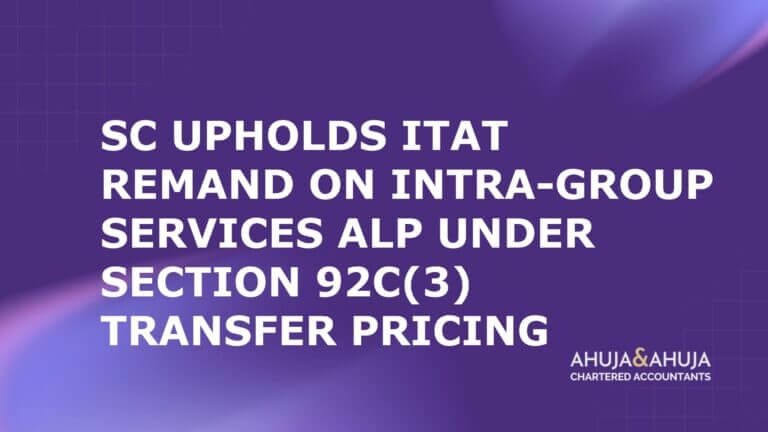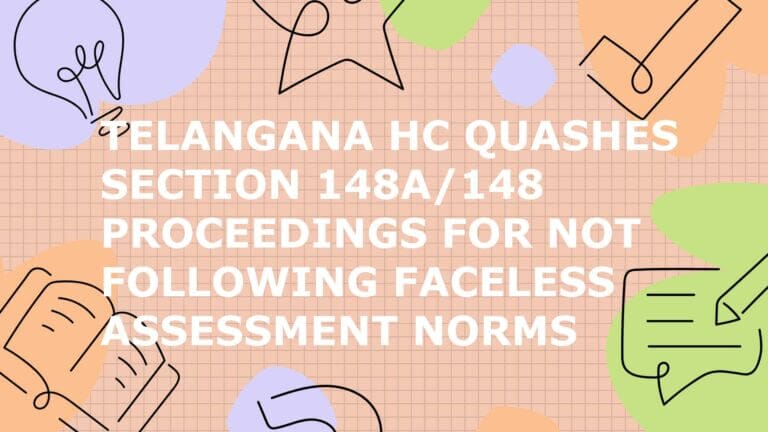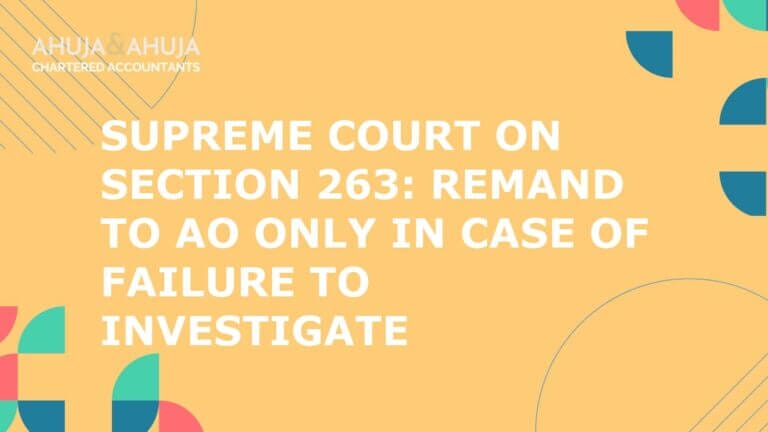ITAT Cochin: Notional Interest Disallowance u/s 36(1)(viii) Quashed—Borrowed Fund Interest Allowed as Revenue Expense
ITAT Cochin Quashes Notional Interest Disallowance—Interest on Borrowed Funds for Renovation of Leasehold Premises Allowed as Revenue Expense
Section Reference Note:
Before we begin, let’s clarify a common confusion. The controversy in this case actually revolves around section 36(1)(iii) of the Income Tax Act (interest on borrowed capital), not section 36(1)(viii) as sometimes misreported. The correct provision is 36(1)(iii), which deals with the deductibility of interest on borrowings used for business purposes. For a detailed understanding of corporate tax services, you may refer to the corporate tax services overview.
Executive Summary
The Income Tax Appellate Tribunal (ITAT) Cochin, in the case of Joyalukkas (India) Pvt. Ltd vs ACIT (AY 2011-12), has set aside the disallowance of “notional interest” on borrowed funds used for the renovation of leasehold premises. The Tribunal held that such renovation is a revenue expenditure, and therefore, the interest on borrowed funds used for this purpose is fully allowable as a revenue expense. This decision is anchored in the Kerala High Court’s earlier ruling in the assessee’s own case, which had already settled the revenue nature of such expenditure. As a result, the ITAT directed the allowance of interest of Rs. 1,39,04,056 as a revenue expense, quashing the notional disallowance. The ruling also reversed the capitalisation of advertisement spend and remanded other transfer pricing issues. For insights into transfer pricing compliance, see our transfer pricing services.
Background and Case Snapshot
- Parties and Forum: Joyalukkas (India) Pvt. Ltd (assessee) vs ACIT, heard by the ITAT Cochin Bench.
For professional assistance in the Cochin region and nearby states, our chartered accountants in Chandigarh offer expert tax advisory. - Assessment Year: 2011-12 (with similar issues for AYs 2012-13 and 2013-14).
- Business Profile: The assessee is engaged in manufacturing and trading of jewellery, textiles, and lifestyle products.
- Disputed Disallowance: The core dispute was the disallowance of interest amounting to Rs. 1,39,04,056 under section 36(1)(iii), on the ground that borrowed funds were used for renovating leasehold premises.
- Procedural Posture: The Assessing Officer (AO) disallowed the interest. The Dispute Resolution Panel (DRP) accepted that the leasehold improvement was revenue in nature but still confirmed the interest disallowance. The ITAT, relying on the Kerala High Court’s view in the assessee’s own case, allowed the interest as a revenue expense.
Issues for Determination
The Tribunal had to address three key questions:
- Is expenditure on renovating leasehold premises for a new showroom capital or revenue?
- If revenue, can interest on borrowed funds used for such renovation be disallowed under the proviso to section 36(1)(iii)?
- Is there any basis to sustain a “notional interest” disallowance when the underlying spend is revenue?
Statutory Framework and Concepts
- Section 36(1)(iii): Allows deduction of interest on capital borrowed for the purposes of business or profession.
- Proviso to 36(1)(iii): Disallows interest relating to the acquisition of a capital asset for extension of existing business/profession for the period up to when the asset is first put to use.
- Notional Interest: Refers to an interest amount computed or attributed by tax authorities, not actually paid or incurred, often used to deny or recharacterize interest deductions where they believe funds are diverted to capital work or non-business use.
For a comprehensive overview of income tax return filing and related compliance, check our income tax return filing services.
Tribunal’s Legal Reasoning: Capital vs Revenue in Leasehold Renovations
The heart of the matter was whether the renovation of leasehold premises created a new capital asset (capital expenditure) or merely facilitated business operations (revenue expenditure).
- Governing Test: The Tribunal applied the classic test—does the expenditure yield an advantage in the capital field (such as a new asset or enduring structural benefit), or is it incurred to facilitate operations, maintain, or make the premises fit for business without creating an owned asset?
- Leasehold Context: Improvements to a leased property that do not result in the acquisition or ownership of a capital asset, and are aimed at making the premises workable, are generally revenue in nature.
- Reliance on Precedent: The Kerala High Court, in the assessee’s own case, had already held that such renovation expenditure is revenue. This settled the foundational characterization for this assessee.
- Why This Matters for Interest: If the base expenditure is revenue, the proviso to section 36(1)(iii) (which applies to capital assets pre–put-to-use) does not apply. Therefore, interest on borrowings for such expenditure cannot be disallowed on that basis.
For businesses looking to better manage such distinctions, our fixed assets audit service can help in proper classification and documentation.
Source of Funds and Relevance to Deductibility
- Tribunal’s Approach: Once the renovation is classified as revenue, the source of funds—whether borrowed or own—becomes irrelevant for the purpose of the proviso. Interest on borrowings used for business purposes is deductible.
- Canonical Rule: The “use” test governs. If borrowings are used for business (even indirectly enabling operations), interest is allowable unless specifically barred.
- Precedential Backbone: The Tribunal leaned on the Kerala High Court’s decision in the assessee’s own case and general Supreme Court jurisprudence, which emphasise substance over form in the “enduring benefit” analysis and the business-purpose nexus.
Quashing the Notional Interest Disallowance
- What is “Notional Interest” Here? The AO had artificially allocated interest on the assumption that funds were tied up in a capital field, warranting denial—despite no actual non-business diversion being proved.
- ITAT’s Rationale: With the renovation classified as revenue, the premise for invoking the proviso collapses. There is neither capital asset acquisition nor a pre–put-to-use window to trigger disallowance. Thus, any “notional” attribution is inappropriate.
- Distinction from Actual Interest: Actual interest paid on business borrowings is deductible under section 36(1)(iii) when used for business. “Notional” adjustments cannot override the correct characterization of the underlying expenditure.
Alignment vis-à-vis AO and DRP
The ITAT’s decision stands out for correcting an internal inconsistency in the DRP’s approach. While the DRP rightly accepted the leasehold improvement as a revenue expense (in line with the Kerala High Court’s binding precedent), it still sustained the disallowance of interest on borrowed funds—a stance that did not logically follow.
- ITAT’s Directive: The Tribunal directed the allowance of the entire interest amount (Rs. 1,39,04,056) as a revenue expense, holding that no disallowance was warranted once the base expenditure was classified as revenue.
- Practical Steps for Taxpayers:
- Highlight inconsistencies in assessment or DRP orders (e.g., revenue treatment of the main expense but disallowance of related interest).
- Anchor submissions in binding High Court or Supreme Court decisions, especially in the assessee’s own case.
- Emphasize the “use” test—if borrowings are used for business, interest is deductible unless specifically barred.
Key Takeaways for Businesses on Leasehold Improvements and Interest
- Classification is Crucial:
- Renovation or fit-out of leasehold premises is revenue in nature if it does not create ownership in a capital asset and is aimed at making the premises usable for business.
- The benefit should be operational, not an enduring advantage in the capital field.
- Interest Deductibility:
- Interest on borrowings used for such revenue renovations is fully deductible; the proviso to section 36(1)(iii) does not apply.
- Documentation Essentials:
- Lease agreements showing no ownership and restoration obligations.
- Invoices and work orders detailing the nature of fit-outs or refurbishments.
- Accounting memos explaining the revenue classification.
- Fund-flow statements linking borrowings to business use.
Future Tax Treatment and Applicability Boundaries
- Positive Impact:
- The ruling reinforces that interest on borrowings for revenue expenditures remains deductible, preventing artificial or notional disallowances.
- Caveats:
- If the renovation results in a new capital asset or significant structural changes with enduring benefit, authorities may invoke the proviso.
- For business extensions involving new capital assets, interest till “put to use” is disallowed by statute.
- In mixed projects, segregate revenue and capital components; capitalize only where warranted and claim interest accordingly.
Misconceptions Clarified
- Myth 1: All large renovation spends are capital.
Reality: Substance matters; many leasehold fit-outs are revenue in nature. - Myth 2: Interest is always disallowable for renovations.
Reality: Disallowance applies only if linked to capital assets pre–put-to-use or to non-business use/diversion. - Myth 3: Authorities can always impute “notional interest.”
Reality: Not when the base expense is revenue and the business-purpose nexus is clear.
For broader updates on tax rulings and myths, see our blog post on Supreme Court on Section 263.
Beyond New Showrooms: Broader Applicability
The ITAT’s reasoning is not limited to new showroom renovations. It can apply to:
- Repairs, refurbishments, rebranding fit-outs, layout changes, and service-area improvements in leased shops or offices.
- Determinants for Applicability:
- Does the work create a distinct capital asset?
- What is the nature and permanence of the works? Are they reversible?
- What do the lease terms say about fixtures and restoration?
- Is the accounting treatment consistent with the substance of the transaction?
For companies undergoing expansions or refurbishments, reviewing the fit-out expenses as part of business setup services can help structure the cost appropriately.
Compliance Playbook: Minimizing Disallowance Risk
Before Spending:
- Obtain a technical note classifying the works; ensure lease terms support revenue classification.
- Structure borrowing documentation to show clear business-purpose nexus.
During Execution:
- Maintain itemized bills, BOQs, and photographs.
- Track work papers distinguishing removable fixtures from structural changes.
- Use separate GL codes for revenue renovations vs capital projects.
During Assessment:
- Prepare a coherent memo linking jurisprudence to facts, especially if you have a favourable case history.
- Demonstrate that no capital asset was acquired; attach relevant lease clauses and fund-flow summaries.
Our GST audit services can complement your compliance documentation during such operational changes.
Conclusion
The ITAT Cochin’s ruling underscores a simple but powerful principle: classify the base expenditure correctly, and the interest treatment will follow. For leasehold renovations that are revenue in nature, interest on related borrowings is deductible. “Notional” disallowances anchored in a capital premise cannot stand. Businesses should document substance, align accounting with tax positions, and proactively present their case to pre-empt misclassification and interest disallowances.
Key Takeaway:
If your leasehold improvement is revenue in substance, interest on borrowings for such work is a legitimate business expense. The focus should always be on the real nature of the spend, not on artificial or notional constructs.
Disclaimer
The materials provided herein are solely for educational and informational purposes. No attorney/professional-client relationship is created when you access or use the site or the materials. The information presented on this site does not constitute legal or professional advice and should not be relied upon for such purposes or used as a substitute for professional or legal advice.







